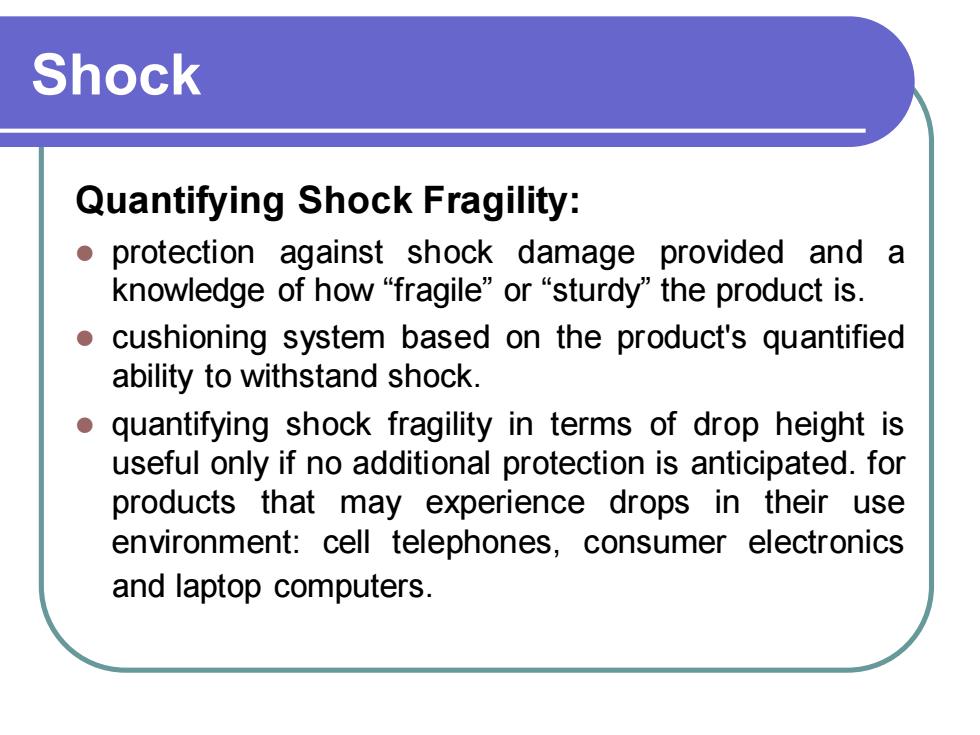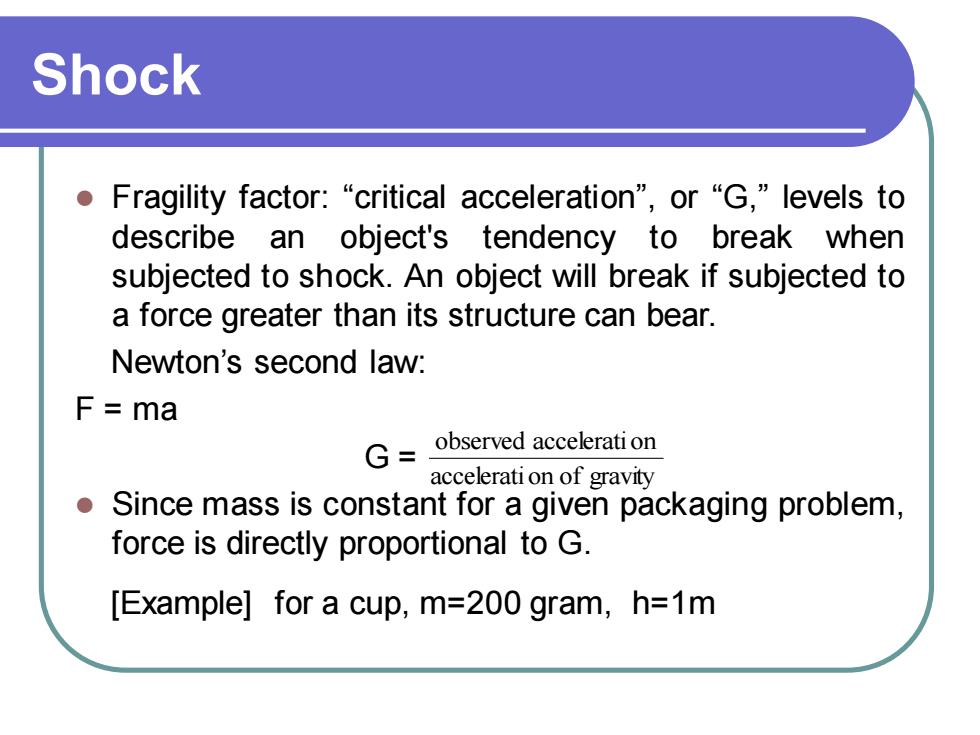
Shock Figure 12.3 Distribution of rail coupling speeds
Shock Figure 12.3 Distribution of rail coupling speeds

Shock ⚫ Shipper experience suggests that damage is greater for rail than for truck shipment. ⚫ The high damage rates attributed to rail are probably due not so much to the actual shock forces as to load shifts and the effects of dynamic compression. ⚫ Good loading and bracing and securing (dunnage) practices can substantially reduce rail damage. ⚫ TOFC shipping may be gentler than regular boxcar shipping
Shock ⚫ Shipper experience suggests that damage is greater for rail than for truck shipment. ⚫ The high damage rates attributed to rail are probably due not so much to the actual shock forces as to load shifts and the effects of dynamic compression. ⚫ Good loading and bracing and securing (dunnage) practices can substantially reduce rail damage. ⚫ TOFC shipping may be gentler than regular boxcar shipping

Shock Other Shock Conditions: ⚫ occurs during the bumps and bangs, typical of mechanical handling and transport; not as great as that experienced during manual handling and free-fall drops; i.e., a package that will withstand manual handling shocks will survive mechanical handling. ⚫ “Repetitive shock”: the low-frequency bouncing or rattling; not likely to cause typical shock damage; however, abrasion can occur, and if the product is in resonance with the input frequency, various forms of mechanical damage may develop (vibration-induced damage)
Shock Other Shock Conditions: ⚫ occurs during the bumps and bangs, typical of mechanical handling and transport; not as great as that experienced during manual handling and free-fall drops; i.e., a package that will withstand manual handling shocks will survive mechanical handling. ⚫ “Repetitive shock”: the low-frequency bouncing or rattling; not likely to cause typical shock damage; however, abrasion can occur, and if the product is in resonance with the input frequency, various forms of mechanical damage may develop (vibration-induced damage)

Shock Quantifying Shock Fragility: ⚫ protection against shock damage provided and a knowledge of how “fragile” or “sturdy” the product is. ⚫ cushioning system based on the product's quantified ability to withstand shock. ⚫ quantifying shock fragility in terms of drop height is useful only if no additional protection is anticipated. for products that may experience drops in their use environment: cell telephones, consumer electronics and laptop computers
Shock Quantifying Shock Fragility: ⚫ protection against shock damage provided and a knowledge of how “fragile” or “sturdy” the product is. ⚫ cushioning system based on the product's quantified ability to withstand shock. ⚫ quantifying shock fragility in terms of drop height is useful only if no additional protection is anticipated. for products that may experience drops in their use environment: cell telephones, consumer electronics and laptop computers

Shock ⚫ Fragility factor: “critical acceleration”, or “G,” levels to describe an object's tendency to break when subjected to shock. An object will break if subjected to a force greater than its structure can bear. Newton’s second law: F = ma G = ⚫ Since mass is constant for a given packaging problem, force is directly proportional to G. [Example] for a cup, m=200 gram, h=1m accelerati on of gravity observed accelerati on
Shock ⚫ Fragility factor: “critical acceleration”, or “G,” levels to describe an object's tendency to break when subjected to shock. An object will break if subjected to a force greater than its structure can bear. Newton’s second law: F = ma G = ⚫ Since mass is constant for a given packaging problem, force is directly proportional to G. [Example] for a cup, m=200 gram, h=1m accelerati on of gravity observed accelerati on